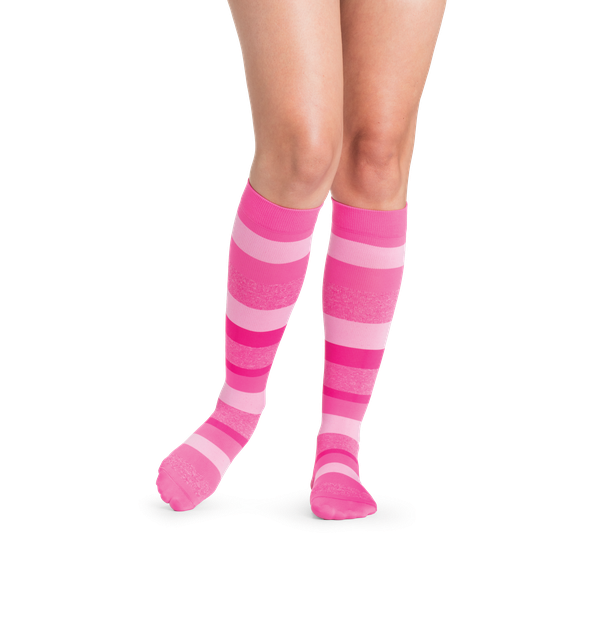What is Vein Disease?
Find relevant information here.
What is Compression Therapy?
Compression therapy refers to stockings or other devices that are specially designed to support your veins and increase circulation in your legs. They improve the signs and symptoms of venous diseases by providing external support to your legs, which may reduce the risk of developing deep venous thrombosis (DVT). When the leg veins do not function properly, blood can pool in the veins, causing swelling and other symptoms.
How do compression stockings work?
Graduated compression stockings provide external support, starting with stronger compression at the ankles that gradually lessens toward the top of the stocking. This external support reduces blood pooling in leg veins, thereby helping overall circulation and diminishing leg swelling throughout the day. This gradual support works in conjunction with the pumping action of the calf muscles, which also assist with circulation, to improve blood return to the heart.
TEDs anti-embolic protection stockings are commonly used in hospitals to help prevent the development of DVTs in patients who are relatively immobile and spend most of their time in bed (©Cardinal Health. All rights reserved. Reprinted with Permission) (The Healthy Veins Book, 2023, p. 156, fig. 31-1).
How do I wear compression stockings?
The stockings are normally worn throughout the day. You put them on in the morning when you get out of bed and remove them before bed at night. For some people with more advanced vein disease or other causes of leg swelling, your physician or non-physician healthcare provider may recommend you wear compression stockings during the night as well.
How do I get compression stockings?
Talk to your physician or non-physician healthcare provider about whether graduated compression stockings are right for you. If so, they can tell you which strength, or pressure gradient, you should wear. Additionally, they may be able to recommend an authorized vendor that can measure and fit you for the stockings and can provide education regarding compression therapy. Since legs come in all different shapes, lengths, and circumferences, professional measurement is important for a proper fit. This maximizes the benefit of the stockings and helps prevent injury or pain from poorly fitted garments.
What other compression garments exist?
In certain cases or for patients with more severe vein disease or wounds, additional types of compression garments may be recommended. These can include lymphatic pumps, short stretch bandages, and wraps.
Chapter 1: Arteries and Veins – The Circulatory System
Chapter 2: How Leg Veins Function
Chapter 11: Compression Stockings and Wrappings




